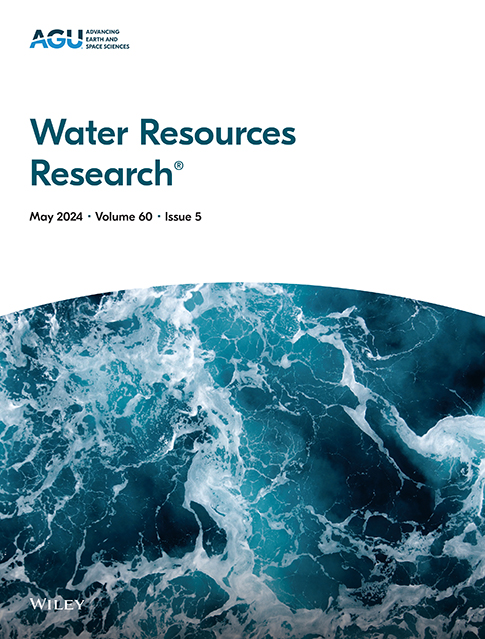AI-Based Digital Rocks Augmentation and Assessment Metrics
IF 4.6
1区 地球科学
Q2 ENVIRONMENTAL SCIENCES
引用次数: 0
Abstract
Reliable uncertainty model calculation in subsurface engineering from pore- and grain-scale to field-scale relies on sufficient data, but subsurface data set acquisition remains a challenge, particularly in domains where data collection is expensive or time-consuming, such as Computed Topography (CT) imaging for digital rock images. While AI-based data augmentation may assist the model training, it still requires many training images as well as the quality assessment of generated data. Yet, most data quantitative metrics flatten spatial data into vectors; therefore, removing the essential spatial relationships within the data. We evaluate topology-based metrics for quality assessment of AI-based image augmentation, coupled with digital rocks augmentation practice using the Single image Generative Adversarial Network (SinGAN) for binarized (segmented) images. Compared to most traditional dimensionality reduction methods that process images into a flattened vector, we propose topological image analysis for dimensionality reduction while preserving the essential geometric and topological features of the high-dimensional data. To demonstrate our proposed approach, we evaluate the generated images starting from four distinct digital rock samples, sorted sandstone, synthetic sphere pack, limestone, and poorly sorted sandstone, using Minkowski functionals, image graph network-based measures, graph Laplacian-based measures, local trend maps, and a homogeneity-heterogeneity classifier. Our workflow suggests that AI-based digital rock augmentation, combined with topological dimensionality reduction offers a powerful tool for enhanced quality assessment and diagnostic of digital rock augmentation and improved interpretation to support decision-making.基于人工智能的数字岩石增强和评估指标
在地下工程中,从孔隙和颗粒尺度到油田尺度,可靠的不确定性模型计算依赖于足够的数据,但地下数据集的获取仍然是一个挑战,特别是在数据收集昂贵或耗时的领域,例如用于数字岩石图像的计算机地形(CT)成像。虽然基于人工智能的数据增强可以辅助模型训练,但它仍然需要大量的训练图像以及对生成数据的质量评估。然而,大多数数据定量度量将空间数据扁平化为向量;因此,删除数据中必要的空间关系。我们评估了基于拓扑的指标,以评估基于人工智能的图像增强的质量,并结合使用单图像生成对抗网络(SinGAN)进行二值化(分割)图像的数字岩石增强实践。与大多数传统的将图像处理成扁平向量的降维方法相比,我们提出了拓扑图像分析,在保留高维数据的基本几何和拓扑特征的同时进行降维。为了证明我们提出的方法,我们使用闵可夫斯基函数、基于图像图网络的度量、基于图拉普拉斯的度量、局部趋势图和同质-异质性分类器,从四种不同的数字岩石样本(分类砂岩、合成球体包、石灰石和分类差的砂岩)开始评估生成的图像。我们的工作流程表明,基于人工智能的数字岩石增强,结合拓扑降维,为提高数字岩石增强的质量评估和诊断提供了一个强大的工具,并改进了解释,以支持决策。
本文章由计算机程序翻译,如有差异,请以英文原文为准。
求助全文
约1分钟内获得全文
求助全文
来源期刊

Water Resources Research
环境科学-湖沼学
CiteScore
8.80
自引率
13.00%
发文量
599
审稿时长
3.5 months
期刊介绍:
Water Resources Research (WRR) is an interdisciplinary journal that focuses on hydrology and water resources. It publishes original research in the natural and social sciences of water. It emphasizes the role of water in the Earth system, including physical, chemical, biological, and ecological processes in water resources research and management, including social, policy, and public health implications. It encompasses observational, experimental, theoretical, analytical, numerical, and data-driven approaches that advance the science of water and its management. Submissions are evaluated for their novelty, accuracy, significance, and broader implications of the findings.
 求助内容:
求助内容: 应助结果提醒方式:
应助结果提醒方式:


